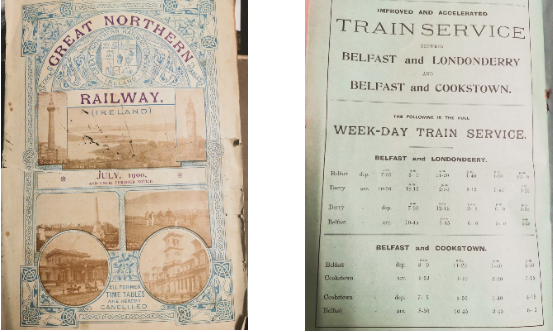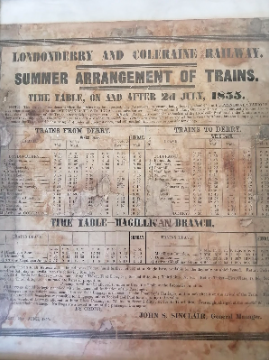On BBC Radio Ulster’s show Talkback on June 9, during a discussion about the impact of Brexit and EU funding on Northern Ireland, Dr Ben Habib said:
“I feel really bad for Northern Ireland. When I think of the difficulties Northern Ireland faces, all I have to think about is the time it takes to go by train from Londonderry to Belfast. A trip of 70 miles takes 2 hours 20 minutes. That’s the same speed at which trains travelled in Victorian times.”
This isn’t correct.
According to timetables from July 1900, the quickest time for a train to get from Derry/Londonderry to Belfast was 2hrs 55mins. This is 43 minutes longer than today’s trains, which take 2hrs 12mins.
The journey, both then and now, follows around 95 miles of rail track.
However, while the overall route may be similar, one thing has changed a lot: the number of stops.
- Timetables
This check looks at the times different trains take to travel between Derry/Londonderry and Belfast, including all stops. It is not a simple comparison of the top speeds of modern and Victorian trains. Considering the average speed over a given journey, including stops, makes more sense – because this reflects the experience of passengers.
Given that the length of the track between the two cities is around 95 miles, and the two journey times cited above – 2hrs 55mins in 1900; 2hrs 12mins today – a simple calculation (speed = distance/time) gives the following average speeds:
1900: 32 MILES PER HOUR
2021: 43 MILES PER HOUR

However, that’s not the whole story. Because, in Victorian times, there were generally a lot more stops.
- Context
The Derry/Londonderry to Belfast train route was linked up in 1852, bridging the final connection between Coleraine and Derry/Londonderry that broadly encompasses the same route of the train track today in 2022. While the route is largely the same, the number of stops differs widely – with many more stops available in the 1900 route.
Indeed, throughout the 1800s train stops were so ubiquitous that there were constant route changes.
For example, as Steven Johnson notes in his book Lost Railways of County Derry, the Magilligan to Magilligan Point route earned notoriety as the shortest-lived passenger line in Ireland, functioning only from June – October 1855.
- The stops gap
Obviously, as a rule, the more stops a route has, the longer it takes for trains to complete a journey.
The effect can be significant. If we consider the 1855 timetable (see image below), it is possible to deduce the average speed of trains and compare those.
- A train in 1855 took 15 minutes to travel the 6 and ¾ miles from Coleraine to Castlerock (including a stop at the Barmouth) = 27 MILES PER HOUR
- A train in 2022 takes 8 minutes to get from Coleraine to Castlerock (Barmouth stop has been closed) = 50 MILES PER HOUR
That is one stop, in isolation, and this effect should not be extrapolated over the whole journey.

Sources for this fact check include:
- Ireland (part I.): Northern Counties, Including Dublin and Neighbourhood, Part 1 MJB, Baddeley (London: Soho Square, 1890)
- Lost Railways of County Derry, by Steven Johnson (Catrine : Stenlake, 2002)
Archival photographs from the Ulster Folk and Transport Museum, with kind permission of National Museums Northern Ireland, and Foyle & District Model Railway Society Facebook. With thanks to Ciarán Cooney at the Irish Railway Archives; the Irish Railway Record Society, Heuston Station, Dublin; and the Foyle Valley Railway Museum.




